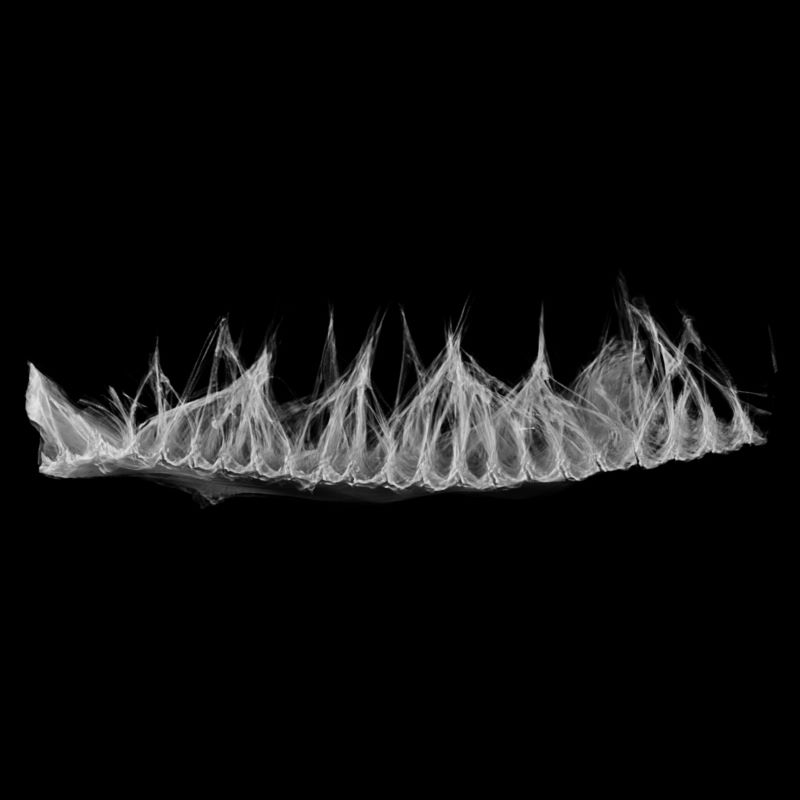A new Interface paper explores the structure and function of Namaqua Sandgrouse feathers

New Journal of the Royal Society Interface research sheds light on the properties of the adult male Namaqua sandgrouse feathers and how their structure allows large amounts of water transportation. We spoke to the authors, Professor Jochen Mueller at Johns Hopkins University and Professor Lorna J. Gibson at Massachusetts Institute of Technology, to find out more.
1) Please can you introduce your study and tell us what it’s about?
Namaqua sandgrouse are found at the edges of deserts in South Africa, Botswana, and Namibia. The adult sandgrouse fly to watering holes to drink, but the young chicks cannot fly until they are about a month old. Instead, amazingly, the adult males transport water in their belly feathers to the chicks at the nest. An adult male can hold roughly 25 milliliters of water in its feathers, about 15% of its body weight. But how do their feathers manage to hold so much water? We usually think of feathers as being water repellent, as in “water off a duck’s back”.
New research published in J. R. Soc. Interface uses modern 3D and high-resolution imaging techniques, such as microcomputed tomography, to show how the unique structure of the specialized belly feathers of male Namaqua sandgrouse allows them to transport water efficiently.
2) How do the properties of the adult male desert sandgrouse help them transport water?
In outer (contour) feathers, the vane is made up of barb shafts which branch off the main feather shaft, and barbules which branch off the barb shafts. In most birds, on one side of the barb shaft, the barbules have hooklets on one side while on the other there are grooves that the hooklets hook into, holding the vane together.
The vane of a Namaqua sandgrouse belly feather is quite different. Easily visible to the naked eye, there is a lighter inner zone and a darker outer zone. In the inner zone, the barbules coil helically where they attach to the barb shaft and then extend straight out, lying flat against the ventral surface of the vane when dry. In the outer zone, the barbules are simply straight. The barbules of neighboring barbs loosely overlap but have no hooklets or grooves, unlike most contour feathers.
On wetting, the helical coils of the barbules in the inner zone unwind, causing the barbules to rotate perpendicular to the plane of the vane, forming a forest of fibers. Surface tension forces draw the inner zone barbules into tear-drop like structures that hold water. Meanwhile, the wispy outer barbules curl around the inner zone, also contributing to water retention.
Measurement of the dimensions of the different parts of the feather allowed us to estimate their bending stiffnesses and to show that the barb shafts in the inner zone were much, much stiffer than the barbules, so that they form a more or less rigid base around which the barbules bend. From our measurements we were also able to show that surface tension forces were large enough to bend the barbules in the inner zone into the tear-drop like structures that hold water and to curl the barb shafts and barbules in the outer zone around the inner zone.
3) How was your experience publishing with J. R. Soc. Interface?
Publishing in Interface was a breeze – the reviews came back promptly, and the revised manuscript was quickly accepted.
4) Could you discuss any broader applications of your work?
Our findings may provide insight for future engineering designs requiring controlled liquid intake, retention, and release. Possible applications include the design of netting for collecting and retaining water from fog and dew in desert regions, nasal swabs for medical testing, and reusable mats to clean up oil spills in the oceans.
Keep up to date with the latest issues of Interface Focus by signing up for article alerts, and browse previous theme issues on the journal website.
Image caption and credit: Cross-sectional view of a wet Namaqua Sandgrouse belly feather, showing unwound barbules that form teardrop-shaped features to trap water in place during flight. Specimen LACM 79159, Ornithology Department of the Natural History Museum of Los Angeles County. Jochen Mueller and Lorna J. Gibson.




